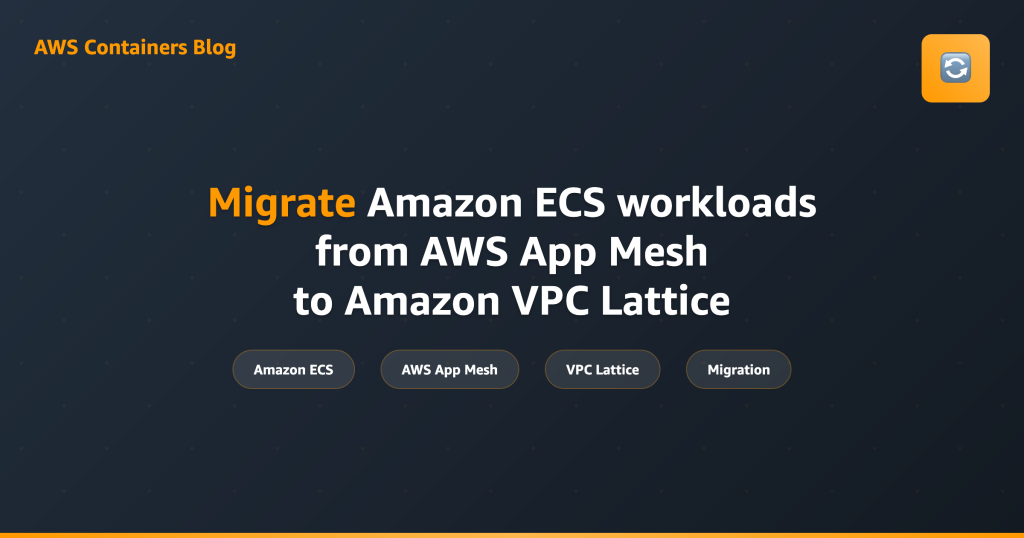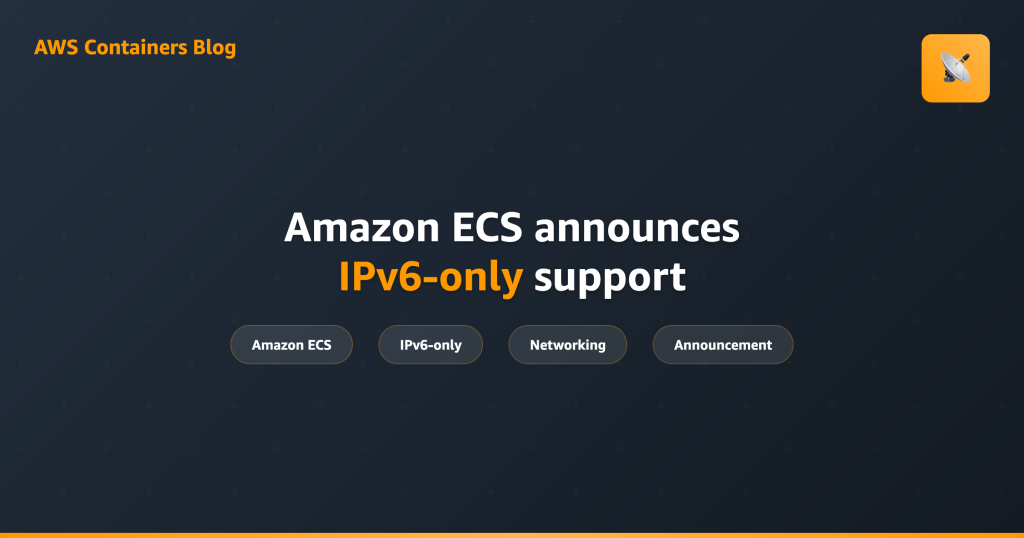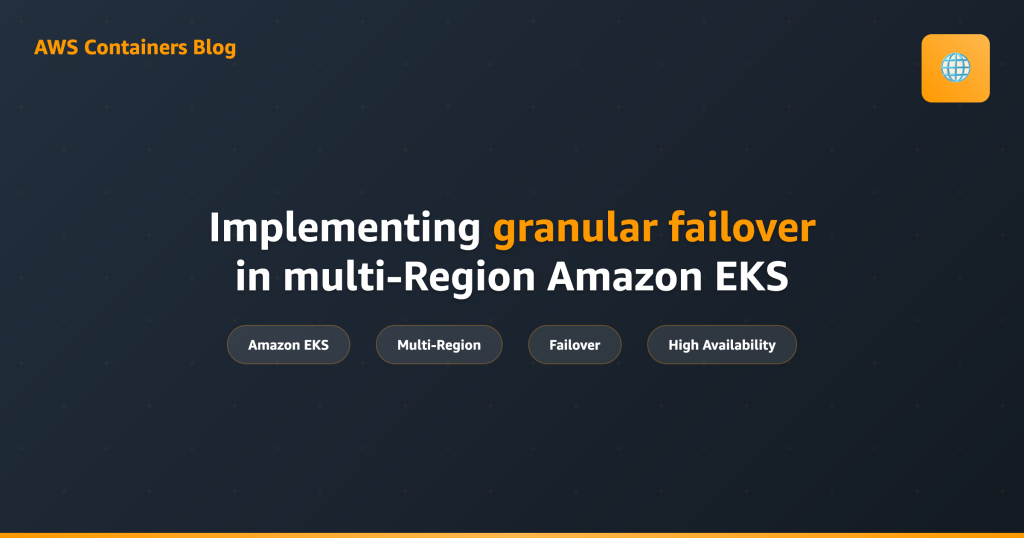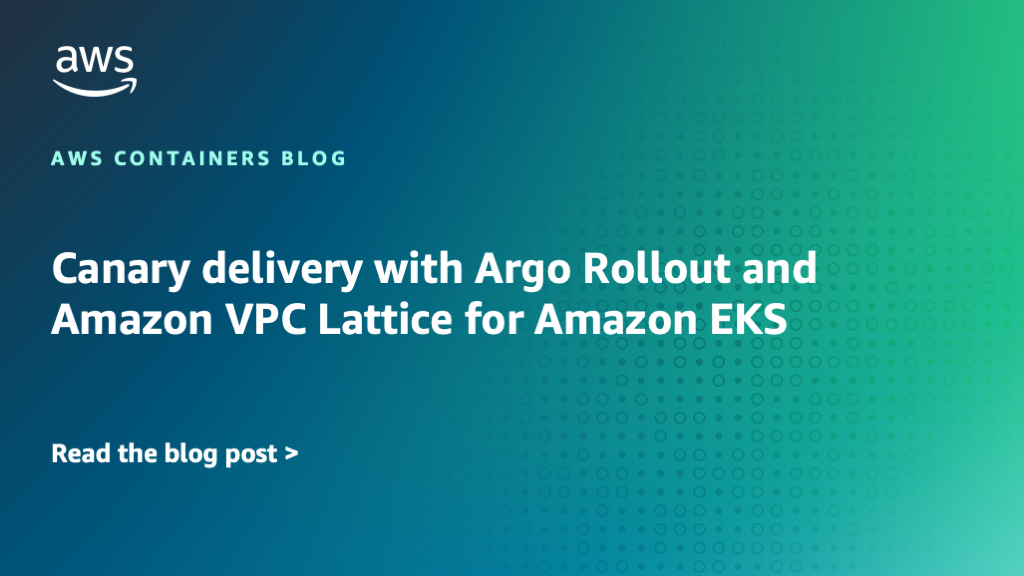Containers
Category: Networking & Content Delivery
Migrate Amazon ECS workloads from AWS App Mesh to Amazon VPC Lattice
In this post, we guide you through the process of migrating from AWS App Mesh to Amazon VPC Lattice, highlighting key considerations and benefits that this transition offers for your cloud infrastructure. We demonstrate how to migrate an IT Inventory Management System application from AWS App Mesh to VPC Lattice using Amazon ECS, with detailed steps for creating VPC Lattice resources, updating task definitions, and implementing blue/green deployment strategies.
Amazon ECS announces IPv6-only support
In this post, Amazon ECS announces support for IPv6-only workloads, allowing users to run containerized applications in IPv6-only environments without IPv4 dependencies while maintaining compatibility with existing applications and AWS services. The new capability helps organizations address IPv4 address exhaustion challenges, streamline network architecture, improve security posture, and meet compliance requirements for IPv6 adoption.
Implementing granular failover in multi-Region Amazon EKS
In this post, we demonstrate how to configure Amazon Route 53 to enable unique failover behavior for each application within multi-tenant Amazon EKS environments across AWS Regions. This solution allows organizations to maintain the cost benefits of shared infrastructure while meeting diverse availability requirements by implementing application-specific health checks that provide granular control over failover scenarios.
Canary delivery with Argo Rollout and Amazon VPC Lattice for Amazon EKS
This post explores how to implement progressive delivery using Amazon VPC Lattice, Amazon CloudWatch Synthetics, and Argo Rollouts for canary deployments in Amazon EKS environments. The solution enables gradual traffic shifting between service versions, real-time health monitoring through synthetic tests, and automated rollbacks if issues are detected, providing a comprehensive approach to safe and reliable application updates.
How webMethods iPaaS built a multi-tenant SaaS platform on Amazon EKS
This post was authored by Markus Kokott, Senior Solutions Architect, AWS and co-written with Balaji Balakrishnan, Head of Platform Services & DevOps, Santa Kumar Bethanapalli, Head of Cloud Operations & SRE, and Natarajan Ramani, Lead Platform Engineer, from webMethods iPaaS. Introduction In this post, we discuss webMethods’ journey in transitioning webMethods iPaaS into a successful […]
Migrating from AWS App Mesh to Amazon VPC Lattice
After careful consideration, we have made the decision to discontinue AWS App Mesh, effective September 30th, 2026. Until this date, existing AWS App Mesh customers will be able to use the service as normal, including creating new resources and onboarding new accounts via the AWS CLI and AWS CloudFormation. Additionally, AWS will continue to provide […]
Migrating from AWS App Mesh to Amazon ECS Service Connect
After careful consideration, we have made the decision to discontinue AWS App Mesh, effective September 30th, 2026. Until this date, existing AWS App Mesh customers will be able to use the service as normal, including creating new resources and onboarding new accounts via the AWS CLI and AWS CloudFormation. Additionally, AWS will continue to provide […]
How Snap Inc. secures its services with Amazon EKS
Introduction Snapchat is an app that hundreds of millions of people around the world use to communicate with their close friends. The app is powered by microservice architectures deployed in Amazon Elastic Kubernetes Service (Amazon EKS) and datastores such as Amazon CloudFront, Amazon Simple Storage Service (Amazon S3), Amazon DynamoDB, and Amazon ElastiCache. This post […]
Enabling mTLS with ALB in Amazon EKS
Introduction In today’s interconnected world, communication faces evolving security threats. From sensitive financial transactions in online banking to secure data transmissions in the automobile industry, ensuring trust and authenticity between businesses is becoming more and more critical. This is where Mutual Transport Layer Security (mTLS) can be an option to offer enhanced security through advanced […]
How to leverage Application Load Balancer’s advanced request routing to route application traffic across multiple Amazon EKS clusters
Introduction The AWS Load Balancer Controller is a Kubernetes Special Interest Group (SIG) project, which enables organizations reduce their Kubernetes compute costs and the complexity of their application routing configuration. As you deploy workloads on Amazon Elastic Kubernetes Service (Amazon EKS), the controller simplifies exposing those applications by automating the provisioning and management and configuration […]









